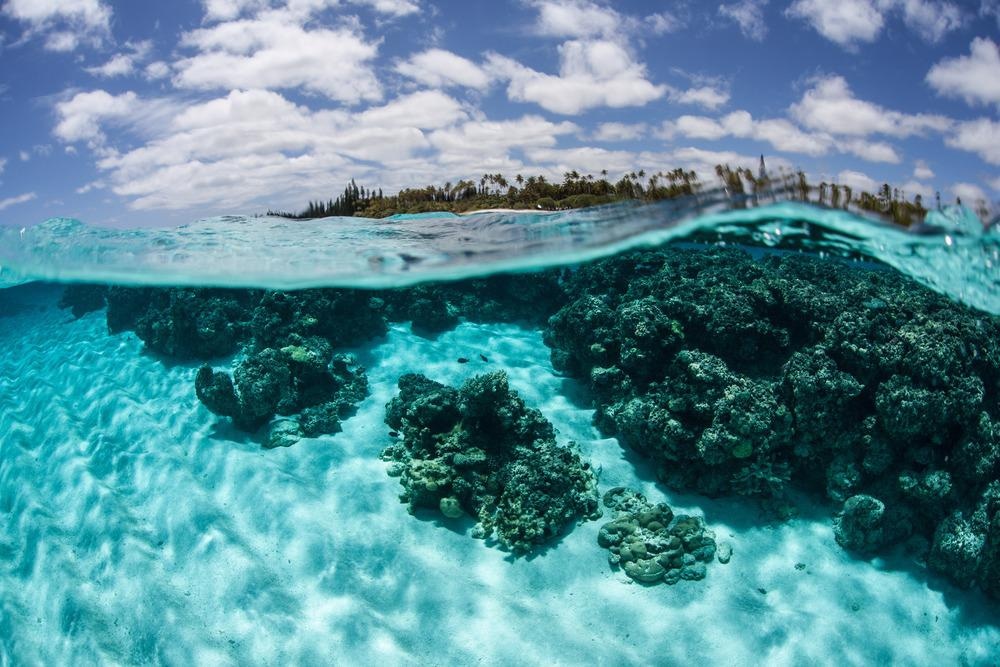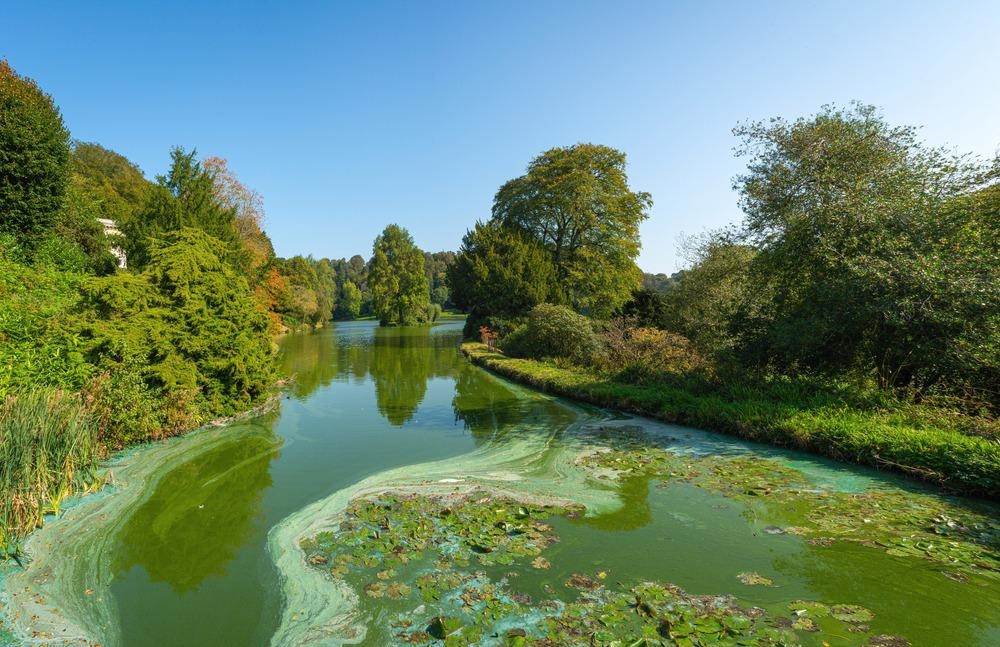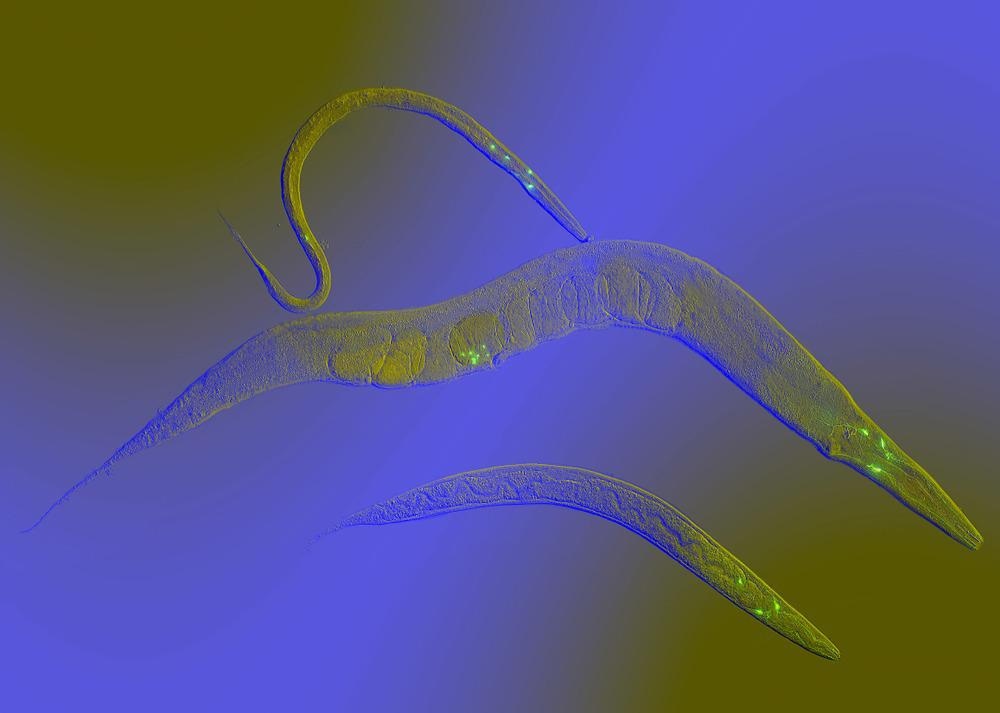What Role Does Biochemistry Play in Marine Biology?
- Introduction
- Cyanobacteria
- Toxins
- Reactive Oxygen Species
- Coral Bleaching
- How Biochemistry Can Aid the Future
- References
- Further Reading
Although the subjects of marine biology and biochemistry do not seem to be an obvious pairing, there are a lot of overlaps. The biochemical processes that specialized organisms have developed to live in niche marine environments are a highly popular research subject.

Marine biology. Image Credit: Ethan Daniels/Shutterstock.com
From the production of specific toxins by Cyanobacteria to the effect humans are having on the coral reefs it is important to recognize the role biochemistry plays in marine biology.
Cyanobacteria
A specific type of bacteria, Cyanobacteria, is known to be one of the oldest prokaryotes in existence and can perform both nitrogen fixation and oxygenic photosynthesis, the photosynthesis most associated with plants. Cyanobacteria can function using the pentose phosphate pathway and carbon dioxide as their only carbon source.
Cyanobacteria are responsible for the oxygenation of the earth’s atmosphere and, through early symbiotic relationships, giving rise to the algae and plants that we recognize today. Their ability to fix nitrogen makes them an important player in the biochemical nitrogen cycle in many marine and terrestrial environments such as agricultural land and tropical oceans.
The wide range of cyanobacteria that are known to grow in an array of environments and, as a result, produce different metabolites. These metabolites are dependent on their surrounding environment such as the temperature, pH or dissolved phosphorus available. The proportion of nitrogen in the surroundings also influences the compounds produced.

Toxins
The production of toxins is a defense mechanism used by many different organisms in many environments. Cyanobacteria are particularly well known for their toxin production abilities due to their sheer variety. There are known to be 34 species of cyanobacteria from 15 genera capable of producing toxins. These toxins include those that induce liver damage, brain damage and heart failure.
Blooms of cyanobacteria are known to regularly occur and, in some cases, can be harmful to populations that either rely on the affected water source or are in its vicinity. It is for this main reason that cyanobacteria can be a substantial burden to public and economic health.
Although these toxins and other products can be harmful to the population, some have been shown to have secondary uses in industry and as novel treatments. They include various ultraviolet-absorbing compounds such as scytonemin and other secondary metabolites.
Uses in Health and Ecological Systems
The compound 2-hydroxyethyl-11-hydroxyhexadec-9-enoate was isolated from the cyanobacteria Leptolyngbya species LY19. The compound was later shown to have antibiotic properties against Vibrio harveyi and Vibrio parahaemolyticus. These species of bacteria are predominantly fish and invertebrate pathogens and are known to be a particular burden on the shrimp industry.
A peptide compound called dolastatin 12 that was originally isolated from the sea hare Dolabella auricularia has been shown to have activity against nasopharyngeal cancer and colon adenocarcinoma cells found in humans. These compounds were subsequently found in mollusks as a product of the cyanobacteria they had consumed.
Another compound found in marine life that is effective against human carcinomas is one of five polyene ketones isolated from an extract taken from Clathria (Thalysias) reinwardti, a marine sponge found off the coast of Vietnam. Out of the five compounds, one was completely novel, two had not been isolated from the environment before, and compound number five was highly cytotoxic against specific human malignancies.
Some of the compounds isolated from cyanobacteria have been shown to have anti-aging effects when tested on Caenorhabditis elegans, a common model organism. Phycocyanin is found in cyanobacteria and some algae and functions as a sunlight harvester. It is used in many different industries including biotechnology and cosmetics. It was also shown to extend the lifespan of C. elegans by 13%.

Some of the compounds isolated from cyanobacteria have been shown to have anti-aging effects when tested on Caenorhabditis elegans. Image Credit: Heiti Paves/Shutterstock.com
Reactive Oxygen Species
The absorption of ultraviolet radiation (UVR) by organic matter in marine environments results in changes in the biochemistry of the surroundings, including the production of reactive oxygen species (ROS). These highly reactive chemicals have been shown to have a detrimental effect on microorganisms present in the environment by damaging their membranes and affecting their ability to photosynthesize.
ROS are also produced as a response to stress by invertebrates. They are also important in the immune response of mollusks against prokaryotic and eukaryotic pathogens. Many marine arthropods, such as crabs and lobsters, have a varied defense response dependent on their exposure to UVR, and so ROS, among other factors including fluctuations in temperature.
Coral Bleaching
The changes in temperature observed across the world due to global warming not only affect the production of compounds such as ROS but also influence other aspects of marine life, such as coral reefs. They account for under 0.1% of the surface of the ocean but house approximately 25% of all marine species.
The symbiotic relationship between the corals and the eukaryotic algae dinoflagellates is what provides the basis for coral reefs. This important relationship can be easily influenced by changes in temperature which results in the death of the dinoflagellates and the loss of the ability of the coral to photosynthesis. This phenomenon is termed coral bleaching and is an increasingly common problem.
The added pressure of urban and agricultural stresses on marine ecosystems, along with the increasing global temperature, has sped up the destruction of the coral reefs and so poses a serious threat to marine diversity.

Coral bleaching. Image Credit: Sabangvideo/Shutterstock.com
How Biochemistry Can Aid the Future
Although the destruction and bleaching of coral reefs is a pressing matter that has disastrous consequences, the more research performed and information gathered, the better-equipped conservationists are in combating it. The increased understanding we have of the biochemistry of marine biology and how changes affect it, the better we can prevent the loss of habitats and species.
References
- Garcia-Pichel, F. (2009). Cyanobacteria. Encyclopedia of Microbiology (Third Edition). https://doi.org/10.1016/B978-012373944-5.00250-9
- Lesser, M. (2006). Oxidative stress in marine environments: biochemistry and physiological ecology. Annual Review of Physiology, 68(1), 253–278. https://doi.org/10.1146/annurev.physiol.68.040104.110001
- Levy, O., Fernandes de Barros Marangoni, L., I. C. Benichou, J., Rottier, C., Béraud, E., Grover, R., & Ferrier-Pagès, C. (2020). Artificial light at night (ALAN) alters the physiology and biochemistry of symbiotic reef building corals. Environmental Pollution, 266, 114987–114987. https://doi.org/10.1016/j.envpol.2020.114987
- Li, Y., Naman, C. B., Alexander, K. L., Guan, H., & Gerwick, W. H. (2020). The chemistry, biochemistry and pharmacology of marine natural products from Leptolyngbya, a chemically endowed genus of cyanobacteria. Marine Drugs, 18(10), 508. doi:http://dx.doi.org/10.3390/md18100508
Further Reading
- All Biochemistry Content
- What is Biochemistry?
- What is Bioorganic Chemistry?
- An Introduction to Enzyme Kinetics
- The Use of Biochemistry within Biotechnology
Last Updated: May 11, 2022

Written by
Grace Plahe
Grace is currently studying for her masters by research at the University of Salford, UK. Her research is looking into the advantages conferred by temperate bacteriophage to the Liverpool epidemic strain (LES) ofPseudomonas aeruginosain different conditions. This has applications in the control and treatment of cystic fibrosis infections. She is due to finish her project by the beginning of 2023 as she is studying part time while also working as a research technician.
Source: Read Full Article


